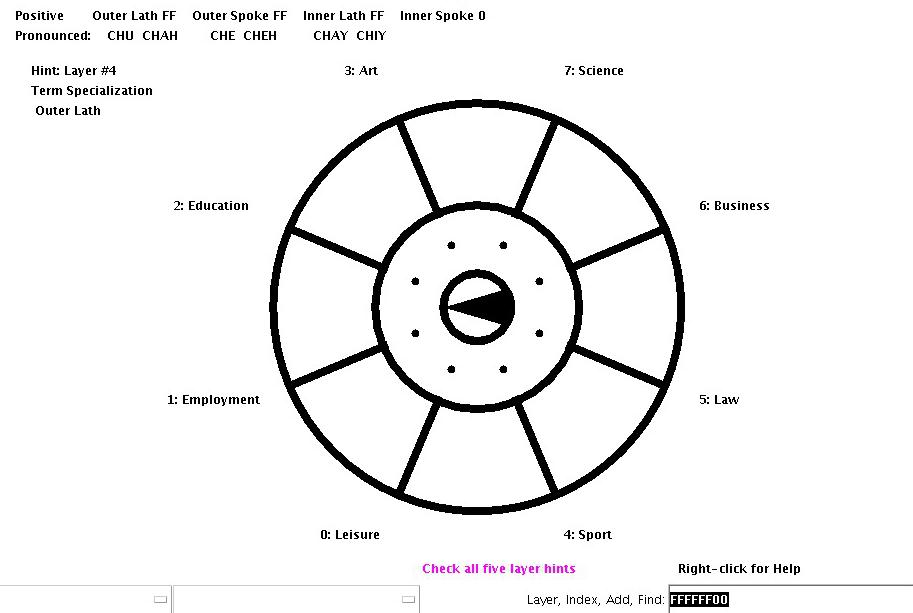
The Glyph of Command

| Type |
Example Functions |
Ordinal State |
| Control |
printer, stereo, robot, refrigerator, games | 7 output global hardware |
| Communication |
contacts, sending messages, phone calls | 6 output global software |
| Configuration |
establishing credentials, settings,
preferences |
5 output local hardware |
| Markup |
creating messages, images, programs, SQL out | 4 output local software |
| Navigation |
maps, GPS, detecting gateways or printers |
3 input global hardware |
| Content |
web surfing, news feeds, music, SQL in | 2 input global software |
| Status | battery, memory, disk drives, connectivity |
1 input local hardware |
| Help |
error or informational messages, user manuals | 0 input local software |
| less positive | positive |
comparative |
superlative |
| desire |
design | designate | deserve |
| Total Value |
Fingers |
Action |
| 0 |
none |
none (remain facing forward) |
| 1 |
L |
reverse direction (turn 180 degrees) |
| 2 |
R |
turn left (in 5-10 degree increments) |
| 3 |
RL |
special movement one |
| 4 |
I |
turn right (in 5-10 degree increments) |
| 5 |
IL |
special movement three |
| 6 |
IR |
look up (in 15-30 degree increments) |
| 7 |
IRL |
look down (in 15-30 degree
increments)
|
| 8 |
P |
move forward |
| 9 |
PL |
back up (remain facing forward) |
| 10 |
PR |
move (slide or strafe) left |
| 11 |
PRL |
special movement two |
| 12 |
PI |
move (slide or strafe) right |
| 13 |
PIL |
special movement four |
| 14 |
PIR |
move up (jump or climb) |
| 15 |
PIRL |
move down (jump or climb) |
| Total Value |
Fingers |
Action |
| 0 |
none |
none (just stand there) |
| 1 |
L |
discard item |
| 2 |
R |
next item |
| 3 |
RL |
previous item |
| 4 |
I |
next weapon |
| 5 |
IL |
previous weapon |
| 6 |
IR |
reload weapon, prepare or recharge item |
| 7 |
IRL |
inspect item closely |
| 8 |
P |
primary attack |
| 9 |
PL |
pick up item |
| 10 |
PR |
manipulate something (open door, use item,
etc.) |
| 11 |
PRL |
special action one |
| 12 |
PI |
secondary attack |
| 13 |
PIL |
special action two |
| 14 |
PIR |
communicate |
| 15 |
PIRL |
defense |